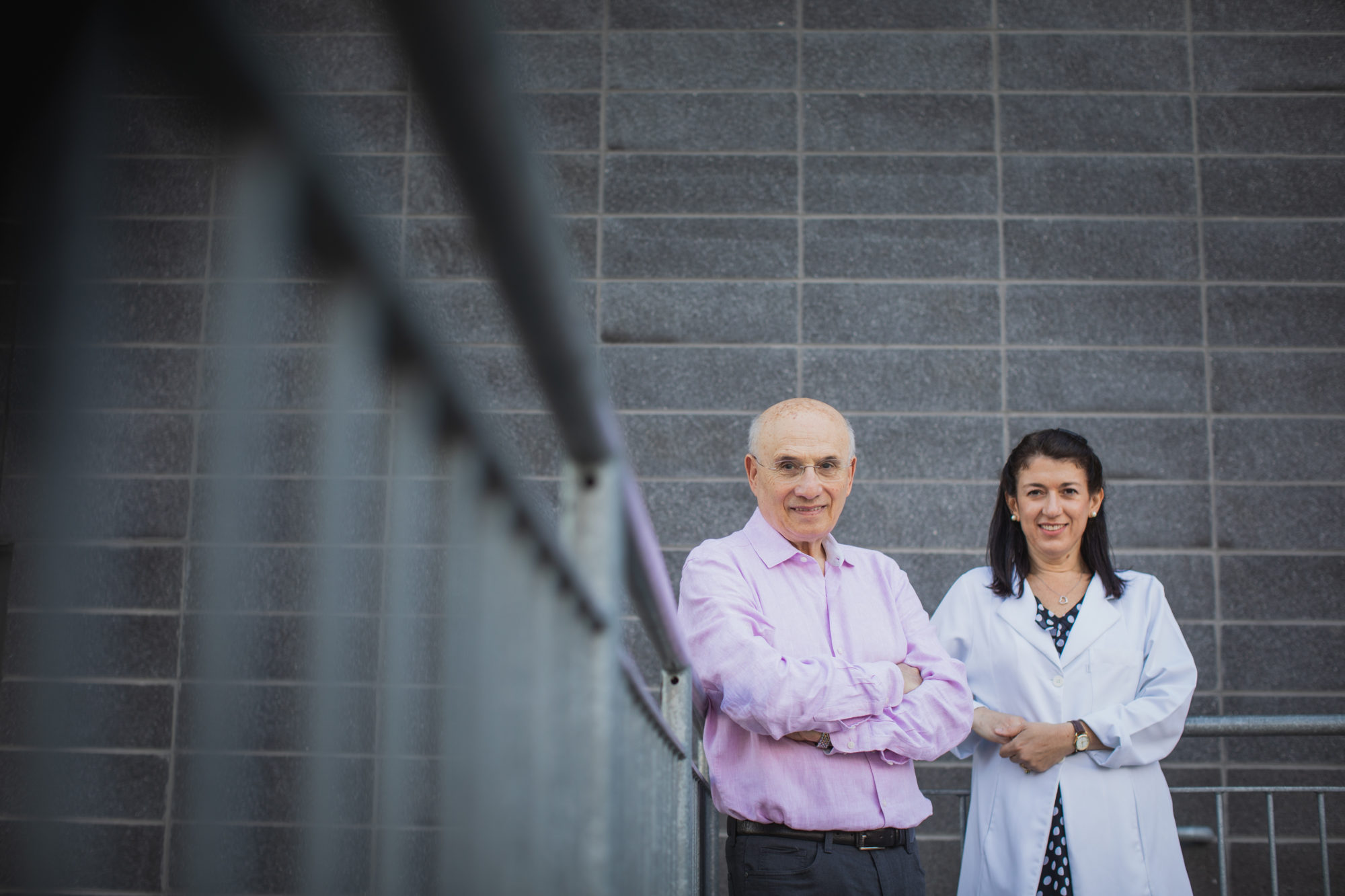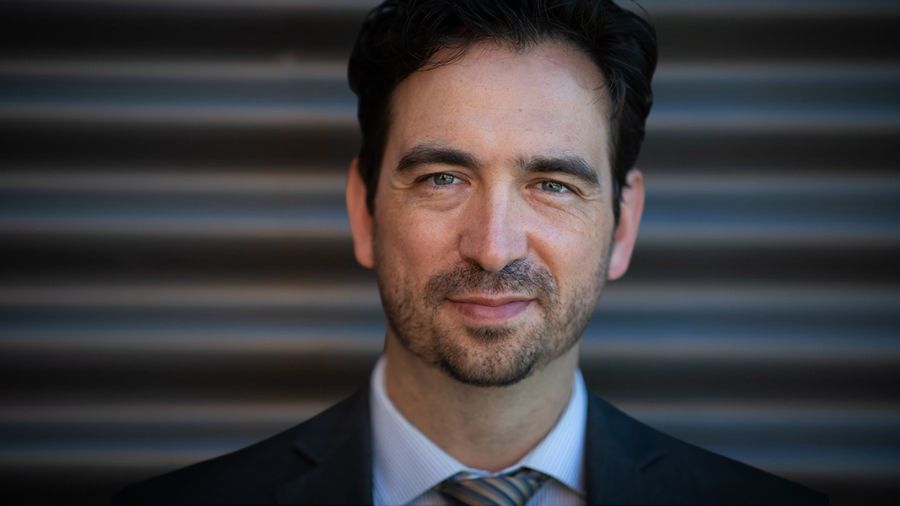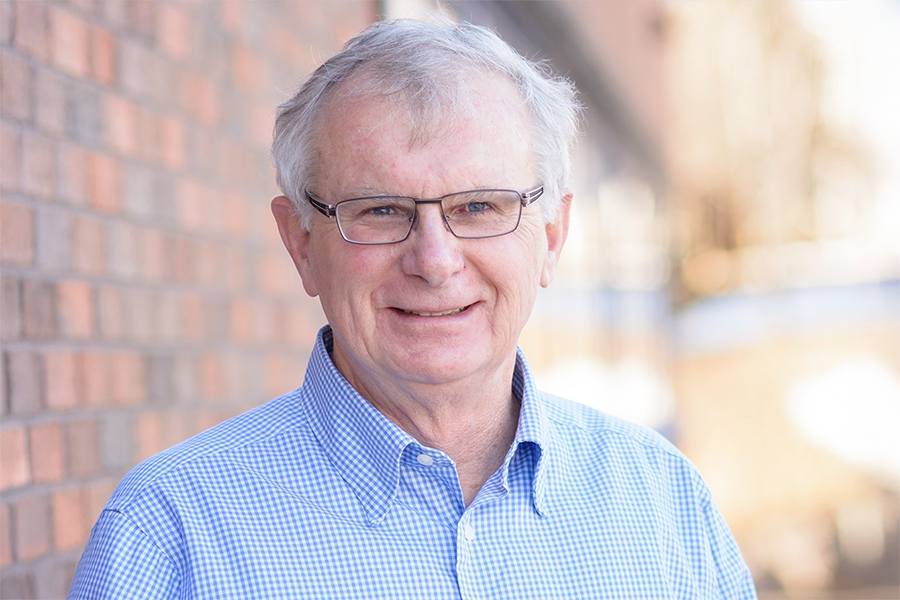“It’s like a light switch that’s gone on.” Ken Moscoe on how biofeedback therapy changed his daughter Nicole’s life. Photos: Tim Fraser.
By Anna Sharratt
Nicole Moscoe first noticed in kindergarten that something was wrong with her eyes. Even when squinting, she could not make out the white letters the teacher wrote on the blackboard.
It soon became clear to Nicole’s father Ken that there was a lot more his daughter couldn’t see: the lettering on street signs or in grocery stores, or the details in video games. When she began using a computer, Nicole had to memorize the keyboard because the white letters and numbers were a blur.
Like most parents, Ken assumed Nicole’s vision problem could be fixed with a corrective device. But after visiting optometrists, then specialists, and getting glasses for Nicole, the Moscoes realized there was no quick fix. She had idiopathic foveal hypoplasia, a condition where there is a malformation of a depression in the retina called the fovea that is responsible for clear, sharp vision. Ken says doctors were not optimistic about the possibility of treatment.
“Everyone was stumped. And it really affected the quality of her life,” he says of Nicole, now 12. “We were actually exploring options outside of Canada to treat this.”
Feeling discouraged, Ken heard about the innovative approaches being pioneered by Dr. Monica Daibert-Nido and the team at the Donald K. Johnson Eye Institute’s Low Vision Rehabilitation Program. Nicole’s doctors at Toronto’s SickKids referred the family to the program.
After assessing Nicole, Dr. Daibert-Nido recommended biofeedback, a revolutionary treatment that employs visual imagery to retrain the brain into using parts of the eye that are undamaged or less damaged.
“Biofeedback is a technique where patients learn to use their remaining vision,” says Dr. Daibert-Nido, clinician scientist at the Donald K. Johnson Eye Institute.
The process is relatively simple: patients look into a device called a microperimeter that projects a target that they need to follow with their eyes. A member of the team then tweaks the target to ensure that areas of the eye that were formerly unused become active. “The brain will train ocular muscles to focus on that spot,” says Dr. Daibert-Nido.
The whole concept is built upon the concept of neuroplasticity – the idea that the brain can “reset,” regardless of the age of the patient, says Dr. Samuel Markowitz, a clinician investigator at UHN’s Donald K. Johnson Eye Institute.
“This is teaching the brain to work better with whatever residual vision patients have,” he says. After biofeedback, the brain remembers how to use the undamaged parts of the eye and patients end up with better vision. They are usually able to read one to three lines better on an eye chart than they did before, says Dr. Markowitz.
In addition to conditions such as Nicole’s, this transformative technique can help improve sight in patients with macular degeneration who are rapidly losing vision. Dr. Markowitz says for many patients, the biofeedback provides them with enough vision that they can resume activities they formerly enjoyed – and it gives them their freedom back.
“Many of them say, ‘I can take the bus now,’” he says.
“It really affects their quality of life: their reading speed, orientation, mobility and learning,” adds Dr. Daibert-Nido.
Nicole underwent five sessions of biofeedback, for 20 minutes once a week. She saw improvement right away.
Ken recalls his daughter exclaiming: “‘Daddy – you won’t believe it! I can see the numbers on the wall!’” She can now see the signs that she formerly couldn’t read.
“Nicole’s vision has improved significantly in terms of distance, small print and contrast, and glasses have gone from trifocals to single lens,” says Ken.
“It’s like a light switch that’s gone on. It’s pretty amazing.”

From “cold lasers” to artificial vision, Dr. Samuel Markowitz (left) and Dr. Monica Daibert-Nido are investigating several emerging treatments
In addition to treating patients with biofeedback, Drs. Daibert-Nido and Markowitz are also investigating other emerging treatments for low vision. For example, there’s photobiomodulation – an innovative treatment that rejuvenates the retina.
With this technique, low intensity “cold lasers” are applied to the retina, causing photochemical changes at a molecular and cellular level. The light affects the mitochondria – organelles that convert nutrients and oxygen into energy – inside retinal cells. The light allows them to “reignite,” improving their sight, says Dr. Markowitz.
The technique was developed at UHN and is currently approved to treat macular degeneration in the EU – with great success. “But it’s not yet approved in Canada,” he says.
“We proved it really enhances vision,” he says, adding he hopes Health Canada will soon approve the procedure.
The researchers are also exploring artificial vision, which is created with the implantation of a retinal prosthesis. Dr. Markowitz says artificial vision can benefit patients with conditions such as retinitis pigmentosa, a rare genetic disorder that leads to cell loss in the retina and declining vision. There are a number of studies worldwide looking at the effectiveness of different procedures, says Dr. Markowitz.
With so many emerging treatments on the horizon, Drs. Daibert-Nido and Markowitz say their end goal is to find solutions for vision-impaired patients like Nicole, who have been told there is nothing left to help them.
“Mostly, we want to make people aware that there is help today in many cases with vision,” says Dr. Markowitz.
“Our aim is always to use remaining vision to find new ways of helping people with low vision live more functional lives.”
This article originally appeared in the recent magazine Vision: A look inside the Donald K. Johnson Eye Institute.



